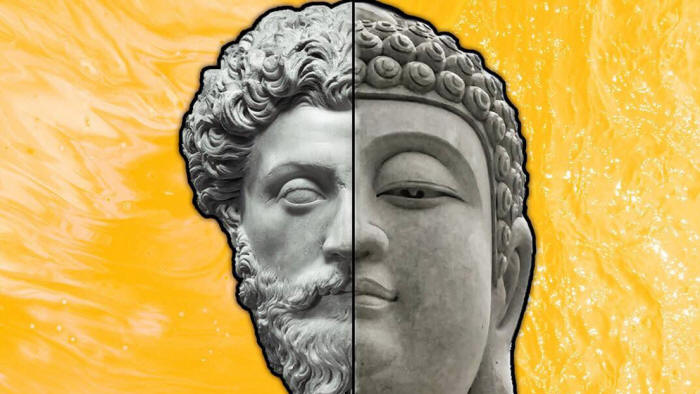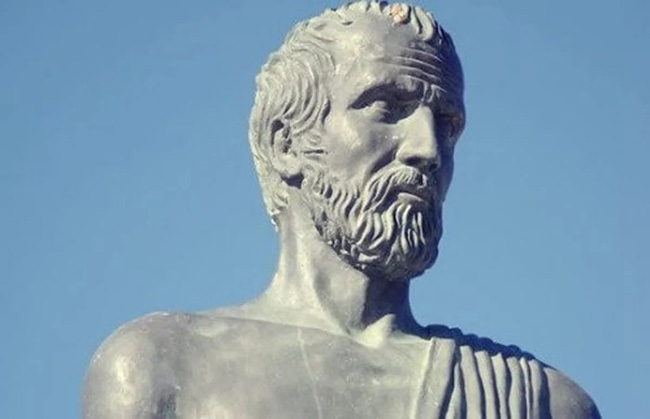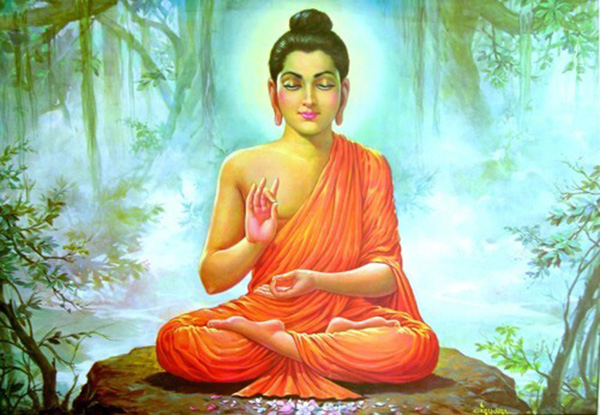|
It's no surprise that the pressures of our modern life, particularly stressed by the ongoing difficulties of the 'pandemic', are driving many to search for techniques and approaches that might offer them some peace in these trying times.
The convergent evolution of the two outlooks, despite the vastly different environments in which they developed, has equipped adherents of each with remarkably similar approaches on how to overcome the challenges we all face in our lives.
In fact, certain aspects are so similar that some historians have even deigned to theorize that perhaps there was some exchange of ideas between the forefathers of each ideology, although this idea has not been widely accepted.
The similarities are more than likely a simple quirk of history. Stoicism was originally known as 'Zenoism'; named for its founder, Zeno of Citium.
Zeno was very wealthy and operated as a merchant until his ship was wrecked on a trading journey. He survived and travelled to Athens, where he ultimately came under the tutelage of the Cynic philosopher Crates of Thebes, before finally developing his own philosophical ideas which he went on to share with others.
Interestingly, the name of the philosophy was changed to prevent the teachings becoming a cult of personality. Instead, the philosophy adopted the name of where it was preached, at the Stoa Poikile, a public hall in Athens.
Stoicism is an eminently practical philosophy focused on how to live a good life and free oneself from emotional burdens.
Stoics believe that we can free ourselves from the effect of the external world and live a good life by living in accordance with the four virtues:
The central thrust of the philosophy has always hinged around accepting life for what it is, and living in the moment, as a cure for the woes of the human condition.
Suffering is,
Indeed, a key goal of any aspiring Stoic is to develop an internal understanding of control:
Epictetus teaches us as much,
Zeno of Citium
Modern Buddhism was founded by a man called Siddhartha Gautama, who lived and taught philosophical and spiritual teachings in the region around the border between modern day Nepal and India.
Although his life is described in early Buddhist texts, the specific details are somewhat contested; however modern historians do agree that Gautama was a real historical figure.
Buddhist texts describe how Gautama was born into aristocracy and raised in a life of immense opulence. Ultimately, however, he cast off these luxuries and spent significant time reflecting and meditating on the nature of life.
He gained an understanding of the cycle of birth and rebirth (a common belief of various religions of the region both then and now) and how to free oneself from it.
The title, Buddha, can be roughly translated as 'Enlightened One'...
It was granted to Gautama after he spent a significant period of time meditating beneath a tree, wherein he reached a state of enlightenment (or nirvana), and achieved freedom from pain and suffering caused by attachments to the world around him.
There are, however, some general core ideals.
For example,
Buddhists believe in the idea of the four noble truths;
better known as the Buddha
Thus,
To overcome this suffering and reach nirvana, the Buddhists follow what is called the Eightfold Path; interestingly, this is somewhat similar to the four virtues of Stoicism.
It consists of cultivating the 'right',
This idea is captured within the teachings of the Buddha, who states,
Beyond their similar origins, stemming from the experiences of one individual, both Buddhism and Stoicism are practical philosophies and have shown a focus and willingness to open themselves up to all comers.
Both are inclusive styles of thought that encourage us to consider our own internal ability to improve our state of mind by focusing upon the one thing we can control:
By finding happiness within us, we can free ourselves from the ever-changing tides of life:
Though one key difference worth highlighting is the extent to which each adherent is expected to remove themselves from their attachments.
While Buddhists seek to free themselves of all worldly attachments, Stoics believe that some aspects of life (known as preferred indifferents, such as physical health) are acceptable to pursue, provided one does not damage their virtue in the process.
Buddhists believe that
Siddhartha Gautama, the 'Buddha', was a real man who was able to
free himself from samsara, the cycle of birth and rebirth, through
the eightfold path, but do not believe he was, or became, a god.
Diogenes of Sinope
The Sage is a person who is completely free from the impact of the world around them.
They have achieved the Stoic aim of no longer being impacted by the circumstances of their life, and instead have reached a state of total freedom, living in complete accordance with the four virtues.
Sound familiar?
This ideal is so rigid and has such a high bar in Stoicism that ancient philosophers were not sure anyone ever had, or ever could, reach that state, though some have argued that Diogenes of Sinope was perhaps a Sage.
I believe that Siddhartha Gautama may well fit the Stoic ideal of a Sage as well.
Both Stoicism and Buddhism, so similar in their outlooks, offer practical routes away from the suffering implicit in day-to-day life.
If we were all to spend a little more time following the eightfold path, and cultivating the four virtues, we might find that those issues we've been grappling with don't seem quite so severe.
While you navigate the challenges of this modern life, remember,
|





